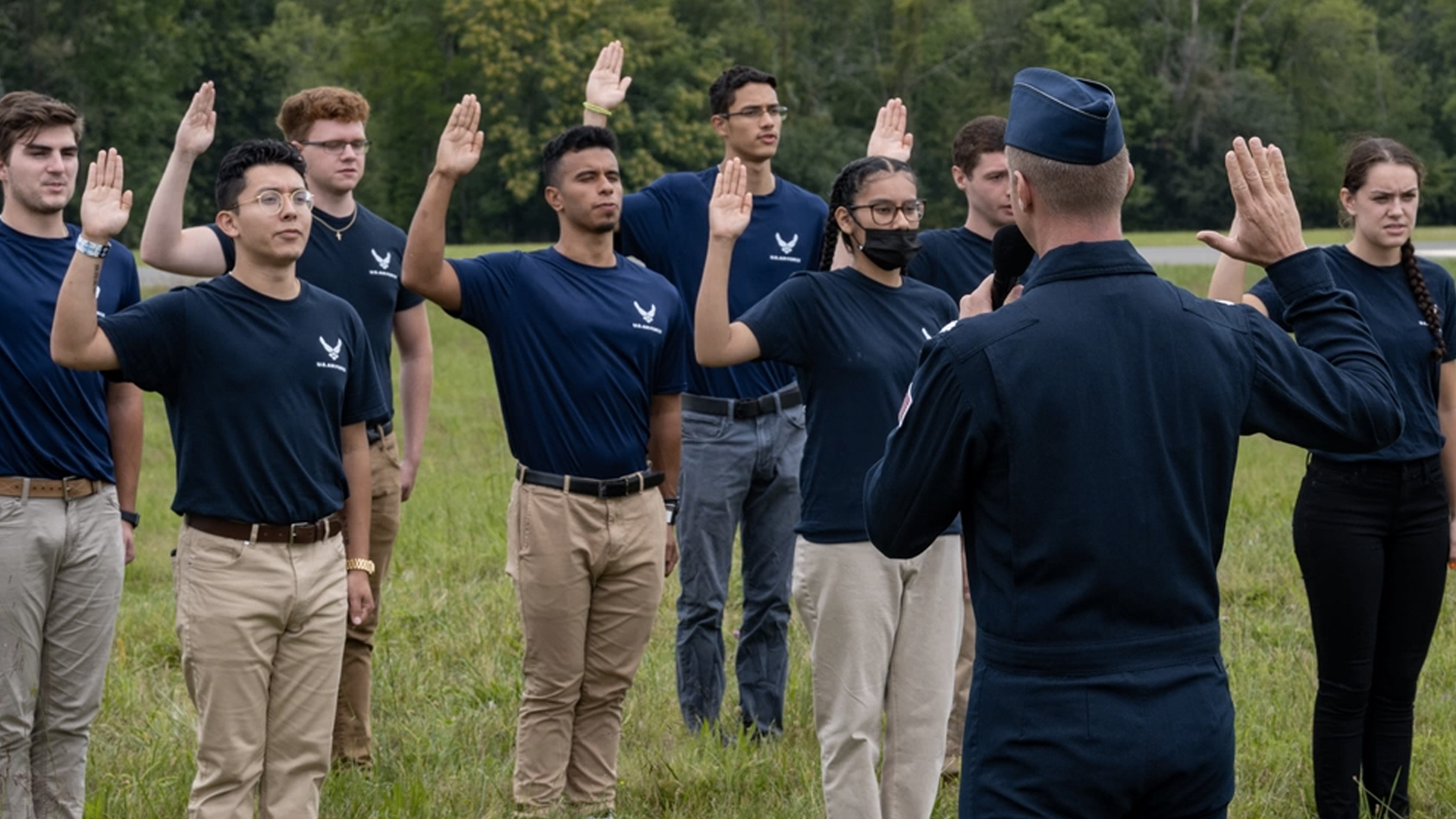

The Department of the Air Force is hoping some incentives for current service members can help fill its ranks.
On Thursday, May 18 the department announced the launch of the Stellar Talent Acquisition Recruiting Referral and Stripes for Referrals programs. Now current members of the Air Force and Space Force (which both fall under the Department of the Air Force) can earn medals and promotions by referring others to enlist in the branches. The idea is to “incentivize” the current members to help the two services with their recruitment efforts, per the Department of the Air Force.
The first, the Stellar Talent Acquisition Recruiting Referral program (or STARR), aims to do that incentivization through medals. Under the program, enlisted airmen and Guardians no higher in rank than senior master sergeant can earn as many as two Air and Space Achievement Medals if they refer at least three people. The same applies to officers no higher in rank than lieutenant colonel. They can also earn an Air and Space Commendation Medal if they recommend five people. In both cases, the applicants must get as far as going to basic training for the referrals to count toward the medals.
Subscribe to Task & Purpose Today. Get the latest military news, entertainment, and gear in your inbox daily.
The second program, Stripes for Referrals, offers new recruits at E-1 ranks a chance to get promoted by making referrals of their own. Those who refer at least two people can reach E-2 ranks, and those who refer four “enlisted accessions candidates who join the Delayed Entry Program or Delayed Entry Training” have the chance to be promoted to E-3 ranks.
Of course, airmen and Guardians have to go through an actual process to earn this, specifically applying through the Aim High application in order for these referrals to be counted.
The two branches are trying this in part due to what looks to be a bad recruitment year. As of March 7, the Air Force was projecting to fall short of its recruitment goals by 10 percent, per Secretary of the Air Force Frank Kendall. The previous fiscal year saw the Air Force reach its goal of active-duty recruitment, but fell 1,500 and 2,000 recruits short for the Reserve and Guard, respectively. In March, Maj. Gen. Ed Thomas, the head of the Air Force Recruiting Service, told Air & Space Forces Magazine that the branch needed to take advantage of every possible way to boost recruitment, as there was no “silver bullet” that could solve the problem.
The Air Force isn’t alone, other branches have been struggling as well. In the previous fiscal year the Army fell short of its recruitment goal by 15,000 enlistees.
The Air and Space forces also aren’t the first branches of the armed forces to try this incentive approach to fill the gaps. The U.S. Army offered similar promotion and decoration rewards, rewarding a little more than 100 recruitment ribbons to soldiers. More than 50 soldiers have also been promoted for their efforts to boost recruitment. Last fiscal year the Army offered a wave of different bonuses, offering as much as $50,000 for people who enlisted and quickly went to basic training.
The latest on Task & Purpose
- Special Forces soldiers reveal first details of battle with Russian mercenaries in Syria
- Who was General Mark Milley before he was ‘The Chairman’?
- What we know about the Marine veteran who killed Jordan Neely on the New York City subway
- Fort Benning, ‘home of the Infantry,’ is now Fort Moore
- Ukraine claims it has routed a Russian brigade near Bakhmut
